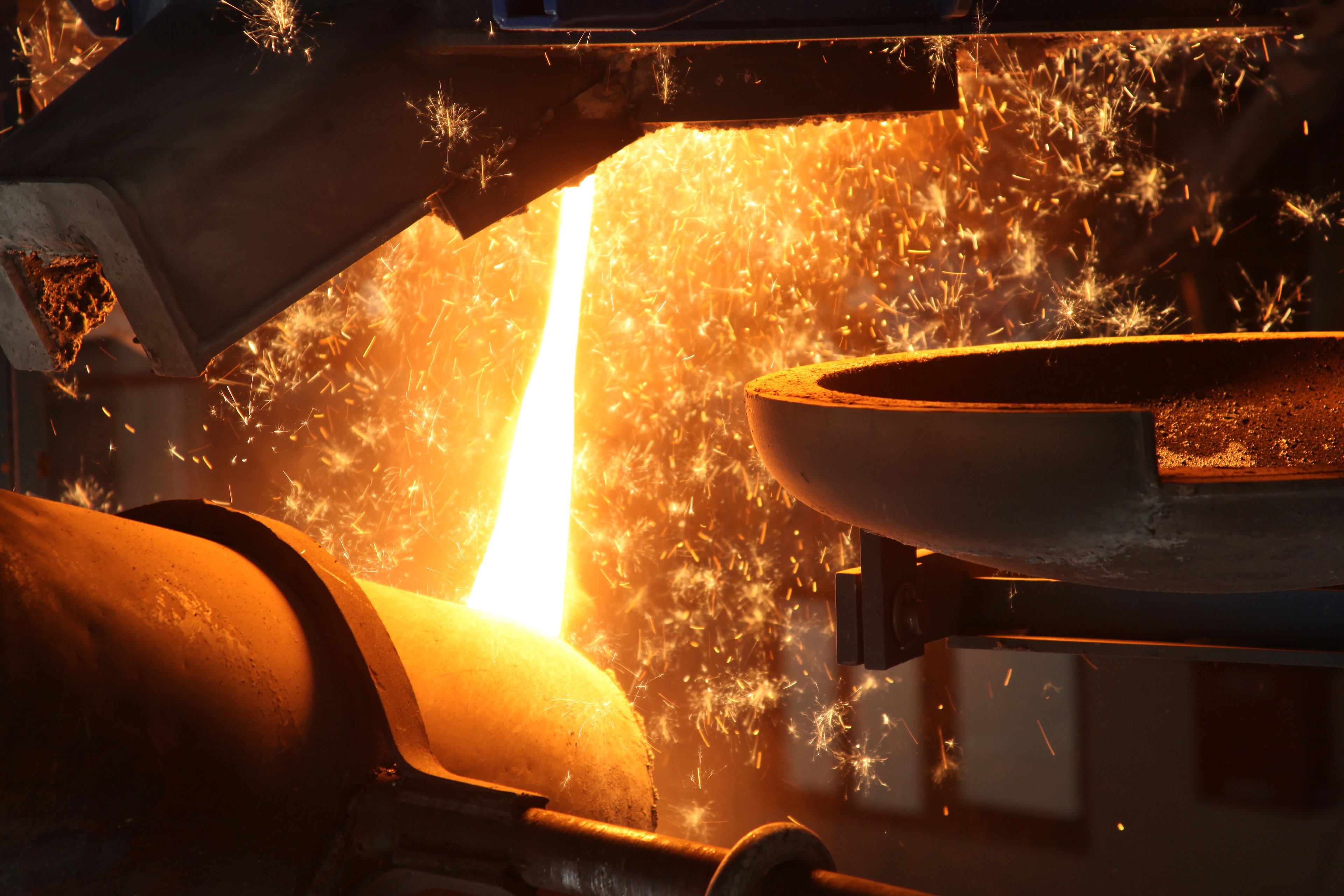When it comes to the steel industry, few names resonate as loudly as United States Steel (X +0.00%). Although it is one of the oldest and most iconic mills, it struggled mightily during the last downturn in this highly cyclical industry. A big part of the problem was the type of mills that underpin its business. It's trying to change, recently agreeing to buy a minority stake in Big River Steel, which has more modern mills, for $700 million. U.S. Steel is putting a positive spin on the deal, but how helpful will it really be?
Legacy assets
Founded in 1901, U.S. Steel has a lot of history behind it. That makes for good reading, but not necessarily a good business. Its age has left it heavily reliant on older blast furnace technology. Blast furnaces are important to the steel industry because it is how primary steel is made from iron ore. However, these are large structures that are expensive to operate. They need to be run at high utilization levels to be profitable. Once utilization rates pass the break-even point, blast furnaces can be highly lucrative, but they tend to bleed red ink -- and lots of it -- during industry downturns.

Image source: Getty Images
That was a big issue over the past decade, which was a difficult one for the steel industry. For example, U.S. Steel posted losses in seven of the past 10 years. Compare that to Nucor (NUE +1.10%), which is focused on more modern electric arc furnaces. Nucor had negative earnings in just one of those years -- 2009 -- as the U.S. economy was working through the deep 2007 to 2009 recession.
Electric arc furnaces, as the name implies, use electricity to produce steel. They also use large amounts of scrap metal. To simplify things a great deal, electric arc mills tend to be smaller and more flexible than blast furnaces. And that allows companies like Nucor to adapt more quickly during downturns. U.S. Steel is well aware of the differences between these two steelmaking methods and is trying to be more like Nucor.
The big deal
U.S. Steel is currently working on building an electric arc furnace at one of its existing facilities. But, in an effort to move the needle more quickly, it just agreed to pay $700 million for a 49.9% stake in Big River Steel, a relatively young steelmaker focused on electric arc mills. U.S. Steel has the option to acquire the rest of Big River at some point over the next four years.
The goal, according to U.S. Steel, is to be "the best of both" steelmaking technologies. It is using this deal to reach this goal faster than it would if it focused only on ground-up construction, with the company noting that it is "building on what we have and investing in what we don't." Big River's modern mills will be a nice addition to the puzzle as U.S. Steel looks to reshape its business so that it can better manage through industry downturns. On that level, it looks like a good deal. However, there are other issues to consider.
Sometimes when a company puts its fingers into too many pies, the business doesn't benefit. That could risk U.S. Steel becoming a "worst of both" option. For example, if its electric arc operations aren't big enough to offset the hit on the blast furnace side when industry conditions are difficult, investors will still have to suffer through red ink. And even if the new operations keep U.S. Steel in the black during downturns, it will likely continue to lag electric arc-focused peers because of the blast furnace drag.
On the flip side, when industry conditions are good and blast furnaces are highly profitable, results might be hampered by the electric arc segment, where results don't usually have such dramatic profitability swings. So investors won't see the full benefit of an upturn that they would have if U.S. Steel had stuck to its blast furnace knitting. While results overall will likely be smoother through the cycle, U.S. Steel probably won't stand out from the pack by focusing on being the "best of both."
X Financial Debt to Equity (Quarterly) data by YCharts.
Leverage is another issue to consider. This $700 million deal isn't cheap when you consider that U.S. Steel's financial debt-to-equity ratio of 0.9 is much higher than electric arc peer Nucor, which has a debt-to-equity ratio of just 0.25. Although U.S. Steel isn't massively overleveraged, noting that it covers its interest expenses by six times, its balance sheet isn't nearly as strong. For reference, Nucor covers its interest expenses by around 24 times.
That, however, is today, while the steel industry is performing relatively well. When the cyclical industry eventually hits the skids, U.S. Steel's higher debt load will become harder to carry. And adding to the pile (it recently announced plans to sell up to $350 million worth of convertible bonds to help pay for the Big River stake) will only make it that much harder. If the company ends up using debt only here, this deal would increase its long-term debt by around 30%. And it only acquired about half of Big River, meaning that U.S. Steel has another large bill coming up sometime in the next four years if it wants to complete the purchase. That level of cash won't be easy to come up with if the steel industry slows down from here. In other words, the plan to pick up the pace of change with a sizable acquisition comes with very real financial risks for U.S. Steel.
Right move, wrong company
All told, U.S. Steel is probably moving in a good direction. But that doesn't mean this deal will turn the company into a desirable investment. It is basically just an attempt to catch up to more nimble peers. And, over the near term, it could even make U.S. Steel a less attractive investment from a balance sheet perspective. That's particularly true if the highly cyclical steel sector turns south. If you are looking at this industry, you're still better off focusing on better-positioned names like industry giant -- and electric arc-focused -- Nucor.







